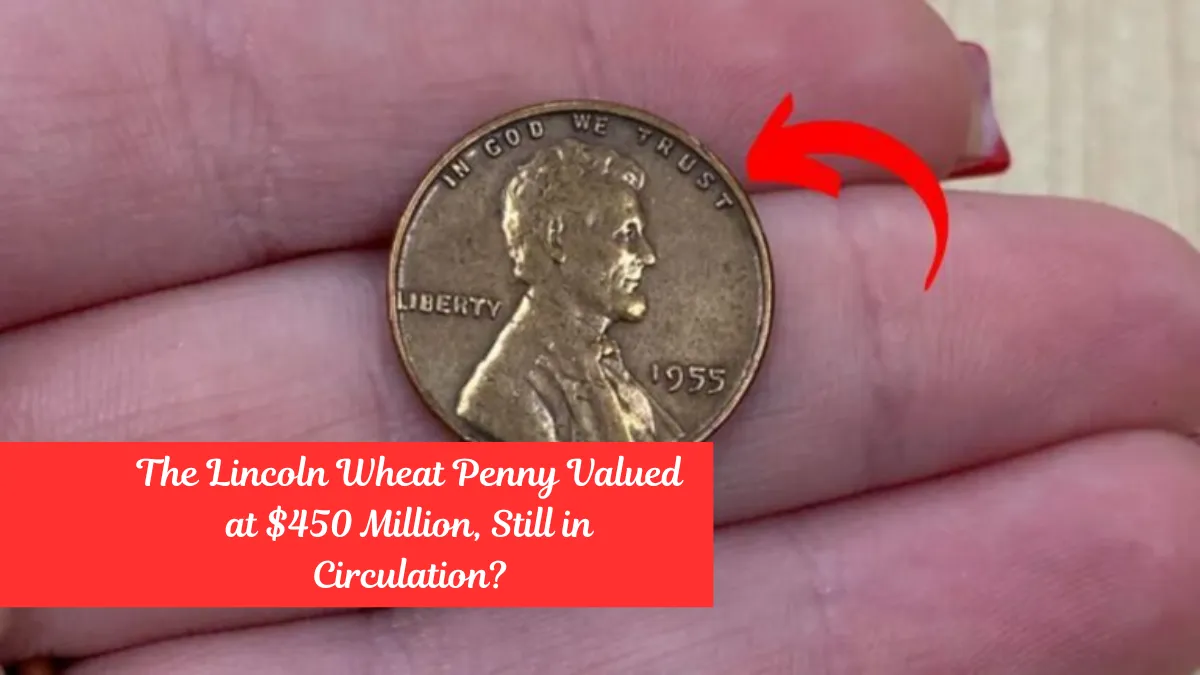It may sound unbelievable, even outrageous—a Lincoln Wheat Penny reportedly valued at $450 million and still possibly in circulation. Could a humble one-cent coin really be worth more than a private jet or a rare painting? Let’s dive into the mythology, facts, and fascination behind this jaw-dropping claim.
The Legendary Lincoln Wheat Penny
First minted in 1909, the Lincoln Wheat Penny was the first U.S. coin to feature a real person—Abraham Lincoln. The coin’s reverse side showed two stylized wheat stalks, giving it its nickname. These pennies were minted until 1958 and are now beloved by collectors for their historical significance and variety of rare mintings.
While most Wheat Pennies are only worth a few cents to a few dollars, some rare variations have fetched hundreds of thousands or even millions at auctions. But $450 million? That figure sounds like it belongs to legend—but legends often stem from a kernel of truth.
Is a $450 Million Penny Real?
In truth, no Lincoln Wheat Penny has officially sold for $450 million—at least not publicly. That valuation borders on the mythical. However, the staggering value often mentioned in collector circles is tied to an ultra-rare coin surrounded by mystery, misinformation, and sensational headlines.
It’s likely that the $450 million figure is a hypothetical value tied to an ultra-rare prototype, unverified minting error, or a coin with unique historical provenance, should one ever surface. In theory, if a one-of-a-kind penny were authenticated as the only one of its kind, tied to a significant event, and in mint condition, it could command an astronomical price among elite collectors.
Famous Lincoln Wheat Pennies That Are Actually Worth a Fortune
Even if the $450 million penny is more myth than market, several Lincoln Wheat Pennies are worth eye-popping amounts in the real world:
1. 1943 Bronze Lincoln Penny
- Why it’s special: Minted in bronze by mistake when pennies were supposed to be made of steel.
- Value: Up to $300,000 to $1.7 million, depending on condition and mint mark.
2. 1909-S VDB
- Why it’s special: First-year issue with designer’s initials, extremely low mintage (484,000).
- Value: $1,000 to $100,000+
3. 1955 Doubled Die
- Why it’s special: Highly noticeable doubling on date and lettering.
- Value: $1,000 to $50,000+
4. 1944 Steel Penny
- Why it’s special: Accidentally minted in leftover steel planchets.
- Value: $100,000 to $500,000
5. 1922 No D Penny
- Why it’s special: Denver was the only mint in 1922, but some coins were struck with no mint mark.
- Value: $500 to $10,000+
Could a Rare Lincoln Penny Still Be in Circulation?
Yes, absolutely. People often find valuable Wheat Pennies in:
- Old coin jars
- Inherited collections
- Yard sales
- Change from stores
Because rare pennies like the 1943 Bronze or the 1955 Doubled Die can look similar to normal coins, they often go unnoticed. That’s why it pays to check your change.
How to Check If You Have a Rare Penny
| Feature | What to Look For |
|---|---|
| Date | 1909, 1914, 1922, 1943, 1944, 1955 |
| Material | Bronze instead of steel (1943), steel instead of bronze (1944) |
| Weight | Rare coins have different weights (bronze: 3.11g, steel: 2.7g) |
| Magnet Test | 1943 steel sticks to a magnet, 1943 bronze does not |
| Mint Marks | Look for “S”, “D”, or none (Philadelphia) |
If you find a coin that matches a known rare version, do not clean it, and get it authenticated by a professional grading service like PCGS or NGC.
Final Thoughts
While a $450 million Lincoln Wheat Penny has never been verified in a real-world transaction, the story captures what makes coin collecting so fascinating—the blend of history, mystery, and the dream of a life-changing discovery.
So next time you sift through your change or old penny jars, take a closer look. You might not find a $450 million treasure, but even a single coin worth thousands could be lying in wait.
Because in the world of numismatics, the extraordinary is often found in the ordinary.
